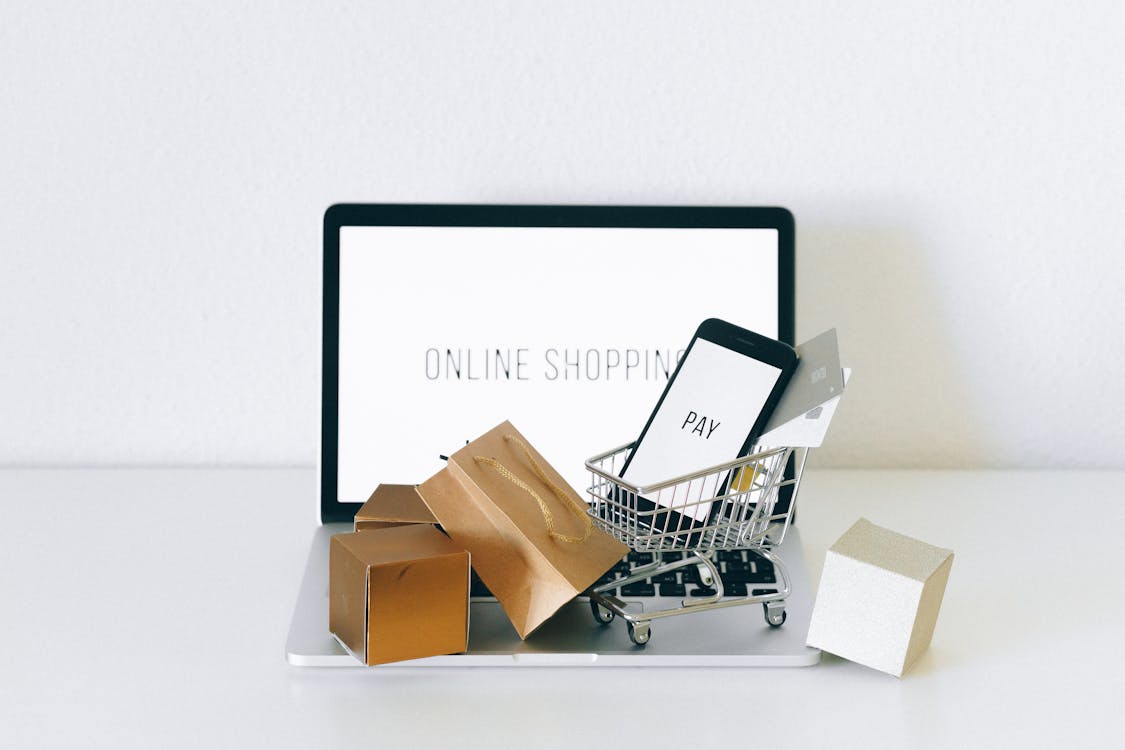A Practical Guide for Companies Navigating Declining Traffic
A drop in organic traffic can feel unsettling — especially if your team relies on steady inbound demand to drive sales. But declining traffic doesn’t...
Published: Aug 27, 2024 Updated: Aug 27, 2024
Here, we look at what goes into creating the perfect product page for your brand. It’s grown increasingly important to grab and keep a customer’s attention from the second they arrive on your product page. They need a great UX and to be catered to as they search for their desired product. In this blog, we look at a few easy steps brands can take to create the perfect product page experience.
Your products are your pride and joy, right? So, it makes sense to present successful product pages in the best possible light across all your channels. Creating the perfect product page is an essential part of making your products resonate with your customers.
Here are tips and tricks and some perfect product page examples that will lead them to believe that they must buy what you are selling.

Increase your conversion rates by getting the right products in front of the right customers at the right time to create good product pages!
How many times have you bought a product in what you thought was your size only to find out it’s not your size at all? How disappointing and we’ve all been there! Incorrect product information accounts for 40% of returns (sizing issues being the main issue here). This is why you need to make sure you’re clear on your sizing guidelines, as this will drastically reduce the number of returns you receive.
If you’re selling products that fall into the XS, S, M, L, and XL categories, give definitions of what each of those sizes corresponds to. This is especially important if you sell over multiple regions as sizes will vary from country to country. Providing precise measurements will enable your customers to have an accurate idea of the size they need. If your products are being modeled, it’s always good practice to specify what size the model is. Specify the height of the model and any other details that will help customers pick the size that’s right for them.

There’s no prouder moment than when one of your perfect product pages gets a rave review. You want to shout about it from the rooftops – and rightly so! Reviews are also a huge influence in the buying journey; research carried out by Brightpearl Brightpearl shows that 95% of consumers read reviews before making a purchase online. So, making sure they’re readily available will boost your conversion rates on effective product pages.
In-depth product reviews give more value to your customers, especially if that review corresponds to the product they’re checking out on your site. Where possible, include product reviews on product pages, not just on your homepage or testimonial pages. It’s also a nice touch to add personal details of the person leaving the review. The size, age, etc. will enable your customers to relate to the product on a deeper level.

You know your products are the best, but do your customers know that too? Make sure your captivating product pages have rich, descriptive content to help customers understand who the product is for, what it should be used for, and where it can be used.
What’s equally as important is letting them know what makes a good product page and why YOUR product is better than the rest. Here, you should be thinking about the pain and pleasure points of your customers. What problem are you solving and how? What will they gain from buying your product? Will they see the results they’re looking for? Create these visions to get your customers thinking that they must buy what you’re selling – pronto!
Give options for the amount of detail your customers see in the product description. This will enhance the customer experience by enabling them to set their preferences. For instance, provide summary data outlining the main features of the product. You can also give the option for the customer to see a more detailed product description if they wish.
Having product data sheets for technical products adds that extra layer of detailed information for your customers, whether that be on or offline. One last point on your product descriptions is around locality. Give your customers the option to view product descriptions in the language of their choice to help your product page stand out.

Humans process images and video around 60,000 times faster than text. This is why product images and videos can massively improve the user experience and make up a core aspect of any perfect product page. Having a relevant number of high-resolution images (depending on the product type) gives your customers a true representation of what they’re buying. Product videos are also a great way of showcasing what your products look like in real life, and can be used to demonstrate how they can be used/worn.
Utilize as much variety as you can i.e., side and front shots, lifestyle shots 3D rotation views. This will not only improve your conversion rates, it will likely improve your product listings on third-party marketplaces. Size comparison tools are also super handy because the customer has a real-life example of how big the product is and whether it’ll suit their needs or not.
Any user-generated content you can include is also a really powerful way of presenting a product in an everyday scenario. This will also reinforce the customers’ relationship with the product and will make your existing customers feel special and valued.
It’s a win-win situation!
Make your customers feel special and valued with hyper-personalization, too. For example, show your individual product page customers content and imagery that will be of interest to them. This is done by using personal information and details of their browsing history. It identifies products they were previously interested in and what channels they’d been using. By tailoring their experience in a way that speaks to them, you’re providing them with an unrivaled online experience.
We all know the feeling of excitement when we get that “your order is on its way” email. This is why you need to make sure your delivery information is made clear throughout the buyer journey. This will drastically reduce abandon basket rates. If the information is unclear, OR if it’s only highlighted at checkout it can be a huge turn-off.
A nifty trick to manage your customers is to include a tool that enables them to see for themselves when the earliest expected delivery date would be by entering their address. This way, they’ll know when they’ll have their products in hand, which will likely increase conversion rates. It’s also worth offering a range of delivery options, such as:
Have you ever placed an order, only to later be told that the product you want isn’t available? It’s so frustrating and makes for an online experience that leaves much to be desired. Competition is rife so, making sure you’re giving an unrivaled customer experience needs to be at the forefront of everything you do.
Having real-time information on stock levels not only offers reassurance to your customers, it can also create a sense of urgency which can push customers to the decision stage a lot faster. Again, this will likely increase your conversion rates.
You have a customer browsing on your site so, while they’re browsing, create opportunities to up-sell. This is a great way of increasing your average order values and can go towards reducing marketing spend. Creating product bundles or kits is an ideal way of doing this. When you create a product page be informative and let your customers know there are complementary or similar products to the one they’re looking at, so they feel they’re being advised instead of being sold to.
Certain clients may still have questions, even if you try your best to answer them on the professional product page. Buyers are apt to switch to a competitor if they can’t get their inquiries answered quickly.
Those who require additional room to express their queries or concerns can use the contact forms. Smaller support teams can benefit greatly from this as it extends their response window. Additionally, it may be possible to fix the client’s problem before getting in touch with them again, which could improve the customer experience. eCommerce businesses have access to a wide variety of user-friendly assistance programs and support ticket software, much like chatbots.
By providing a quick and simple for customers to contact you, a chatbot is a terrific approach to help reduce bounce rates. Customers may be able to get their issues fixed by the bot or be routed to a live human for more assistance because they can come pre-loaded with many automated answer chains. Almost any eCommerce product page can include an AI-powered chatbot thanks to a variety of plugins and solutions.
A new chatbot, which can identify a user’s IP address and communicate messages based on their location, is an excellent illustration of this practice. They also provide a human touch that helps reduce the aggravation that sometimes accompanies automatic response systems by displaying to visitors which customer care agents are now available to answer questions.
You can make a FAQ section that provides even quicker access to answers if you see a pattern of frequently asked questions regarding a certain product. FAQs can be continually expanded as needed and are typically located at the bottom of product information pages.
Long load times can cause visitors to leave your product detail page before they even get a chance to view it, regardless of how well-organized it is. Forty percent of people will abandon a website if it takes longer than three seconds to load, per a report. Page speed is important since it can improve how well your web pages rank in search results. To help you get started, here are a few easy steps.

When you’ve been looking through loads and loads of different product pages, it’s sometimes tricky to remember how you got to where you were or how to get back to a page you were previously looking at. By using breadcrumb navigation, your customers can easily navigate their way around your site and revisit previous sections, too.
A PIM will give you the power you to quickly make changes to create perfect product pages thanks to powerful integrations and updating capabilities. The Pimberly Platform also has a DAM solution, enabling you to add as many images and videos to accompany your products as you like. Your products are your pride and joy so, do them justice and create perfect product pages that tell stories, bring your products to life, and increase your conversion rates!


